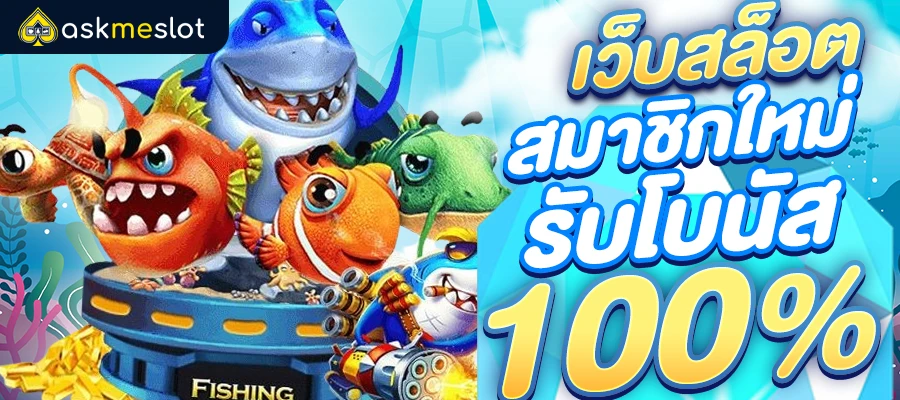สล็อตเว็บตรง ไม่ผ่านเอเย่นต์ ทรูวอเลท ไม่มีขั้นต่ำ เว็บสล็อต ใหม่ล่าสุด 2025
สล็อตเว็บตรง จัดได้ว่าเป็นศูนย์รวมเว็บเกมพนันออนไลน์มากมาย เว็บสล็อตแท้100% จากทุกค่ายดัง เช่น ค่าย PG,SlotXO,Jili slot เป็นต้น เว็บสล็อต อันดับ 1 ที่ดีที่สุด จัดหนักจัดเต็มสำหรับคอเกมสล็อตทุกรูปแบบเดิมพันอย่างจุใจ เล่นง่าย เพียงแค่มีโทรศัพท์มือถือ หรือ คอมพิวเตอร์ ทั้งนี้ สล็อต เว็บตรงไม่ผ่านเอเย่นต์ไม่มีขั้นต่ำ ฝากถอนระออโต้ ทรูวอเลท เว็บตรง ไม่ผ่านเอเย่นต์ สล็อต API แท้100% สมัครสมาชิกง่าย สามารถสนุกไปกับ เกมสล็อตออนไลน์ ของเว็บ สล็อตเว็บตรง ได้ ทำเงินง่ายได้ไวและจ่ายเงินจริง 100% เว็บสล็อตใหม่ล่าสุด แห่งปี 2025 ที่คุณห้ามพลาด
สล็อตเว็บตรง คืออะไร? ทำไมต้องเดิมพัน กับ เว็บตรง 100% เท่านั้น
สล็อตเว็บตรง คือ เว็บที่ให้บริการเดิมพันเกม ลิขสิทธิ์แท้ 100% ทุกเกมส่งตรงจากต่างประเทศ และยังเป็น เว็บสล็อต ที่มีใบรับรองที่ถูกกฏหมาย ได้มาตราฐานสากล สล็อตเว็บตรง ไม่ผ่านเอเย่นต์หรือคนกลางในการดำเนินการ จึงรับประกันได้ว่า สล็อตอันดับ 1 ทำเงินกำไรให้ผู้เล่นได้อย่างแน่นอน ทุกเกมสล็อตบนเว็บไซด์นี้ เราได้คัดสรร สล็อตแตกง่าย แตกหนัก และมีค่า RTP สูง 98% ขึ้นไป และยังมีฟรีสปินแจกให้อย่างจุใจ รวมถึงระบบฝากถอน สล็อตเว็บตรง ทรูวอเลท ไม่มีขั้นต่ำ และรองรับบัญชีทุกธนาคาร และแม้ ไม่มีบัญชีธนาคาร ก็ยังเล่นเกมได้ เพราะทุกระบบในเว็บสล็อตตรง เป็นระบบออโต้ ดังนั้นจึงเป็นเหตุผลว่าทำไมคุณต้องสมัครสมาชิกกับ เว็บตรง 100% เท่านั้น

ข้อดีของการเล่นเกม บน สล็อตเว็บตรง เว็บพนันออนไลน์ ไม่ผ่านเอเย่นต์
หากคุณยังไม่มีประสบการณ์หรือให้ความสนใจในการเดิมพันบน สล็อตเว็บตรง ไม่ผ่านเอเย่นต์ มีจุดเด่นๆ สำหรับการเล่น เกมสล็อต ที่มีอยู่ในสล็อตออนไลน์ทุกเว็บ ก็คือ ผู้เล่นนั้นสามารถเข้าไปเล่นเมื่อไหร่ก็ได้ ทุกที่ทุกเวลา โดยที่ไม่ต้องเสียเวลาในการเดินทางไปเล่นที่คาสิโนจริง ด้วยรูปแบบการเล่นออนไลน์ ซึ่งก็สามารถสร้างความสนุกไปกับเกมพนันที่ทันสมัยได้ และนอกจากนั้น สล็อตเว็บตรง 100 ยังมีข้อดีอื่นๆ อีกดังนี้
รวมทุกเกมสล็อต จากค่ายดัง ยอดนิยม
สล็อตเว็บตรง เอาใจเหล่านักปั่นสล็อตออนไลน์ทั้งหลาย ที่ต้องการหารายได้เสริมพร้อมกับการเล่นเกมสนุกๆ กับ สล็อตเว็บตรง ควบคู่กันไปด้วย คุณจะได้เปิดประสบการณ์ความมันส์ ที่ดีที่สุด ไปกับเกมยอดนิยมจากหลายค่ายดัง สล็อต pg เว็บตรง แตกหนัก ซึ่งเราได้คัดสรร มารวมไว้ที่ เว็บสล็อตตรง เพื่อนักเล่นเกมโดยเฉพาะ การันตี แตกง่าย แตกหนัก
ฝากถอนออโต้ วอเลท ไม่มีขั้นต่ำ
สำหรับระบบการบริการของ เว็บสล็อตเว็บตรงค่ายใหญ่ เราสามารถสร้างความพึงพอใจให้กับสมาชิกของเราได้ดี ด้วยการเลือกใช้ระบบการฝากถอนอัตโนมัติที่มีคุณภาพ สล็อตวอเลท เว็บตรง ฝาก-ถอน true wallet ไม่มี ขั้น ต่ํา ใช้งานง่าย ทันสมัย รวดเร็วทันใจ สมาชิกทุกท่านมีความสะดวกในการเล่นเกมสล็อต จึงไม่จำเป็นต้องรอนานอีกต่อไป
ทางเข้าเล่น รวดเร็ว ผ่านมือถือ
อย่างที่รู้กันว่า สล็อตเว็บตรง เป็นเว็บเกมสล็อตออนไลน์ที่เล่นง่าย เพียงแค่มีมือถือ คอมพิวเตอร์ หรือแทปเล็ต ก็สามารถเล่นเกมสล็อตกับเราได้ทุกที่ทุกเวลา แค่คุณมีอินเตอร์เน็ต สล็อตออโต้ ( SLOT AUTO ) โคุณก็สามารถหาเงินได้ง่าย ๆ โดยที่ไม่ต้องเสียเวลาเดินทางไปคาสิโนจริง เพราะเราได้รวบรวมความสนุกและความสะดวกสบายไว้ที่นี้ที่เดียว
บริการโหมด ทดลองเล่นสล็อต
สล็อตเว็บตรง ถือได้ว่าเป็นศูนย์รวมแห่งเกมสล็อตที่หลากหลาย มากมายจากค่ายดังๆทั้งนั้น จึงป็นเหตุผลว่าคุณห้ามพลาดลงเดิมพันที่ เว็บสล็อตตรง เพราะสามารถใช้โหมด ทดลองเล่นสล็อตฟรี ทุกค่ายทุกเกมสนุกได้มาตรฐาน เอฟเฟคสุดอลังการ เสมือนได้เข้าไปเล่นในสถานที่จริง ๆ สล็อตเว็บตรง100 ต่างประเทศ ยังมาพร้อมบริการเกมหลายรูปแบบ ทั้งนี้เพื่อทำให้คุณสนุกได้โดยไม่ไมต้องสมัครสมาชิกและฝึกฝนความชำนาญก่อนลงเดิมพันจริง

สล็อตเว็บตรง ทำเงินง่าย ได้เงินจริง การันตี ความปลอดภัย อันดับ 1
เว็บสล็อตออนไลน์ของเรา ถือเป็นทางเลือก ที่ดีที่สุด สำหรับนักปั่นสล็อตทั้งหลายในเวลานี้ เพราะเป็นเว็บเกม สล็อตเว็บตรง ที่เล่ยง่าย แตกไว ใช้เวลาเพียงไม่กี่วินาที ก็สามารถพิชิตแจ็คพอตได้ รวดเร็วทันใจ แต่ผู้เล่นเกมสล็อตบางคน อาจมีความกังวลเรื่องความปลอดภัยของเงิน ซึ่งก็ว่าถือเป็นเรื่องปกติในการเล่นบนเว็บสล็อตเว็บตรง ค่ายใหญ่ ในรูปแบบออนไลน์ แต่คุณหมดความกังวลได้เลย ด้วยมาตรฐานการบริการของเราที่ให้บริการมายาวนาน อีกทั้ง สล็อตเว็บตรง ยังมีระบบการดูแลควบคุมความปลอดภัยในระดับสูง จึงทำให้มั่นใจได้ว่า ทุกการเดิมพันกับเราจะไม่มีการโกง หรือข้อมูลรั่วไหลได้อย่างแน่นอน เชื่อถือได้ 100%
แนะนำ 6 เกมสล็อตแตกง่าย จาก PG SLOT เว็บตรง จากค่ายเกมยอดนิยม ในเอเชีย
ขอแนะนำเกมสล็อตออนไลน์ สล็อตลิขสิทธิ์แท้ 100% ที่น่าสนใจ บน สล็อตเว็บตรง การเลือกจากค่าย PG มาเนื่องจากว่า เป็นหนึ่งในค่ายเกมที่นักพนันออนไลน์เข้าเล่นมากที่สุด สล็อต pg เว็บตรง แตกหนัก RTP เกิน 98% และก็เป็นค่ายเกมที่นักเดิมพันให้ความชื่นชอบ PG SLOT เว็บตรง ทั้งหมดนั้น มาพร้อมกับคำว่าคุณภาพและมาตรฐาน ดูกันว่าแต่ละเกมมีจุดเด่นและข้อดีอย่างไร
1. Dragon Hatch 2
เกมสล็อตที่มีสัญลักษณ์เป็นลูกมังกร กระแสดีถึงกับต้องพัฒนาเวอร์ชั่น 2 ทาง ทางเข้าเล่น เว็บ สล็อต ก็พร้อมที่จะนำเสนอบริการได้ทันที เกมนี้ในธีมแบบเกมเก่ามาพัฒนารูปแบบใหม่ ให้ง่ายมากขึ้นพร้อมกับโอกาสทำเงินรางวัลได้มากมาย แตกบ่อย เป็นอีกหนึ่งในเกมที่นักพนันรุ่นใหม่ไม่ควรพลาด
2. Mystic Potions
เกมสล็อตค่าย PG เว็บตรง นำเสนอธีมแนวเวทมนตร์การผสมตัวยา ถือว่าธีมนี้น่าสนใจอย่างมาก และมาพร้อมกับรูปแบบการเข้ารางวัลแบบใหม่ ช่วยให้ท้าทายและคุ้มค่า สล็อตเว็บตรง ก็อยากจะให้นักพนันที่ตามหาเกมแบบใหม่ล่าสุด ดูข้อมูลเกมนี้แล้วจะเข้าใจว่าแตกต่างอย่างลงตัวจากค่ายดังอย่าง PG SLOT เว็บตรง อันดับ 1
3. Werewolf’s Hunt
สล็อตpgแท้ บอกได้ว่าห้ามพลาด เกมสล็อตมาแรงอย่างปีศาจหนึ่งในธีมนอกกระแสแต่กลับโดนใจ เป็นอีกเกมที่มาแรงพร้อมกับเงินรางวัลที่ลุ้นได้มากมาย สล็อตเว็บตรง โดยเกมนี้มีรูปแบบการเล่นในรอบทั่วไปเน้นการคอมโบ และถ้าเข้ารอบฟรีเกมเมื่อไหร่ จะเป็นการรีสปินและสะสมตัวคูณ ส่งผลให้เมื่อชนะเงินรางวัล SLOT AUTO แตกหนักแน่นอน
4. Treasures of Aztec 2
Treasures of Aztec 2 เป็นเกมสล็อตที่พัฒนาต่อยอดจากภาคแรกได้อย่างยอดเยี่ยม มีการทำกราฟิกที่ดียิ่งขึ้นและเพิ่มฟีเจอร์ใหม่ๆ ทำให้เกมนี้มีความน่าสนใจและน่าเล่นมากยิ่งขึ้น สำหรับนักเดิมพันที่ชื่นชอบธีมการผจญภัยและเกมสล็อตที่มีอัตราการชนะเกมสูง SLOT เว็บตรง ขอแนะนำ Treasures of Aztec 2
5. Thai River Wonders
PG สล็อตเว็บตรง ยกให้ Thai River Wonders เป็นเกมสล็อตที่น่าสนใจสำหรับผู้เล่นที่ชื่นชอบธีมวัฒนธรรมไทยและเกมที่มีกราฟิกสวยงาม ด้วยฟีเจอร์ที่น่าสนใจและแตกง่าย ทำให้เกมนี้เป็นตัวเลือกที่ดีที่สุด สำหรับผู้ที่ต้องการความบันเทิงและโอกาสในการชนะรางวัล ฟีเจอร์ฟรีสปินและตัวคูณที่ช่วยเพิ่มโอกาสในการชนะรางวัล
6. Speed Winner
เว็บสล็อต pg คัดมาอีกเกม คือ Speed Winner ซึ่งเป็นเกมความเร็วของการแข่งขัน รูปแบบของการเข้ารางวัลที่แตกต่าง ฟีเจอร์ที่เพิ่มเติมเข้ามาช่วยให้คุ้มค่ามากขึ้น pg slot auto ถือว่าเป็นอีกทางเลือกที่น่าสนใจไม่น้อย สัญลักษณ์ที่มาพร้อมกับตัวคูณเงินรางวัล ช่วยให้การเข้ารางวัลมีมูลค่าที่สูง เกมสล็อต ใครที่ชื่นชอบความแตกต่างแต่ไม่ยุ่งยากเกมนี้ คือคำตอบ

สล็อตวอเลท ปั่นสล็อต มาแรง ไม่สะดุด สล็อตเว็บตรง ระบบเกมสล็อต ที่ดีที่สุด
เล่นสล็อตเว็บตรง ด้วยระบบการเล่นเกมที่ทันสมัย ช่วยให้คุณเล่นสล็อตทุกประเภทได้อย่างปลอดภัย ยิ่งคุณเล่นมากเท่าไหร่ คุณก็จะยิ่งชนะรางวัลใหญ่ได้ง่ายเท่านั้น สล็อตเว็บตรง แตกง่าย ให้ความสนุกและคุ้มค่าตลอดเวลา หมุนสล็อตด้วยอัตราการชนะสูงและรับรางวัลอันมีค่า ทำให้ผู้ใช้ทุกคนมีโอกาสชนะโบนัสจริง ฝากและถอนด้วย True Wallet บนเว็บตรง ไม่มีการล็อกผู้ใช้ระหว่างการเล่นเกม ระบบเชื่อถือได้และปลอดภัยสูง ช่วยให้เล่นเกมได้อย่างราบรื่นและไม่สะดุด เป็น สล็อตเว็บตรงอันดับ 1 ที่มีระบบที่เสถียรที่สุดในปัจจุบัน ฝากและถอนโดยไม่มีข้อกำหนดขั้นต่ำ
Pg Slot สล็อตเว็บตรง 2025 เว็บสล็อตแท้ ไม่ผ่านเอเย่นต์ ระบบเสียร
สล็อตเว็บตรง ไม่ผ่านเอเย่นต์ ให้บริการเกมสล็อตจาก ค่าย PG มากกว่า 3000 เกมส์ เว็บตรงที่ไม่ต้องผ่านคนกลางใด ๆ ดังนั้นผู้เล่นสามารถมั่นใจได้ว่ากำไรจากการเดิมพันจะถูกหลอก เพราะผู้เล่นสามารถฝาก–ถอน ได้ด้วยตัวเองด้วยระบบ ทรูวเลท ไม่มีขั้นต่ำ ซึ่งก็มีโอกาสทำเงินได้สูง สำหรับผู้ที่ไม่เคยเล่นมาก่อนก็สามารถเล่นได้ ด้วยการใช้ ทดลองเล่นสล็อต ฟรี และนอกจากนั้นยังมีสิทธิประโยชน์อื่นอีกมากมายที่รอคุณอยู่
นอกจากนี้เว็บสล็อตตรง พีจีสล็อต ยังเป็นเว็บที่ให้คุณสามารถมั่นใจได้ เพราะเราเป็นเว็บตรง 100 ไม่มีประวัติการโกง ผู้เล่นเหมือนได้ลงเดิมพันกับเจ้าของเว็บโดยตรง การเงินมั่นคง มั่นใจได้ทุกการลงทุน สล็อตเว็บตรง เว็บใหญ่ ที่ให้บริการเกมมาอย่างยาวนาน ระบบลื่นไหล ไม่สะดุด ไม่มีค้าง ไม่ปิดปรับปรุงบ่อย สนุกได้อย่างเต็มที่ตลอดการเล่นเกมของคุณ
ทำไมต้องเลือกเล่น เว็บสล็อตเว็บตรง ที่มีค่าย PG SLOT ยอดนิยม มากที่สุด ?
การมองหาเว็บที่เป็น สล็อตเว็บตรง ของแท้นั้น จำเป็นที่จะต้องมีค่ายเกมมากมาย และมีค่ายชั้นนำอย่าง PG SLOT เว็บตรง ที่มีความยอดฮิตมากที่สุด เพราะการันตี API ของแท้ แน่นอน ถูกส่งมาจากบริษัทชั้นนำ ที่ไม่มีการผ่านเอเย่นต์ นอกจากนี้แล้ว เว็บสล็อตpg นั้นมีโอกาสแตกง่าย เป็นอย่างมาก พร้อมเงินรางวัลนับไม่ถ้วน เพียงแค่เข้ามาปั่นสล็อต ภายในเว็บตรงแท้ ก็มีโอกาสที่จะชนะสูงที่สุด
| แพลตฟอร์ม | ยูสเซอร์ | สถิติ | กำไร |
|---|
เว็บสล็อตเว็บตรงค่ายใหญ่ ใหม่ล่าสุด มาพร้อมจุดเด่นที่คุณห้ามพลาด
สล็อตเว็บตรง เว็บพนันออนไลน์ ยอดนิยมและมาแรง เล่นเกมสล็อตได้ปลอดภัย ด้วยระบบที่มีคุณภาพ การเงินมั่นคง ได้เงินจริง ซึ่งเป็นที่ชื่นชอบสำหรับนักปั่นสล็อตทั้งหลาย หากคุณเป็นแฟนตัวยงของเกมสล็อตออนไลน์ เรามีเกมมากมายมาให้คุณได้เลือกเล่นแบบไม่ซ้ำใคร เว็บสล็อตเว็บตรง ค่ายใหญ่ สนุกแบบจุใจ ไม่ว่าจะเป็นเกมแบบใหม่ๆ เกมแปลกๆ ที่คุณไม่เคยเล่นที่ไหนมาก่อน อย่างไรก็ตาม วันนี้เราก็มีข้อมูลดี ๆ เพิ่มเติม สำหรับผู้เล่นทั้งหลาย ในการมาเป็นสมาชิกกับเราว่าคุณจะได้รับความพึงพอใจอะไรจากการเป็นสมาชิกกับเราบ้าง?
- ปั่นสล็อตได้ทุกเกม ทุกค่าย ไม่มีสะดุด เป็นระบบที่เสถียร รองรับการเล่นแบบไม่จำกัด และยังสามารถ ทดลองเล่นเกมได้ไม่อั้น
- สล็อตเว็บตรง ติดต่อ ได้ตลอด 24 ชั่วโมง เป็นอีกหนึ่งบริการ ที่นักเล่นเกมสล็อตสามารถมั่นใจได้ว่า เมื่อเกิดปัญหาในการใช้งาน หรือปัญหาการฝากถอนเพราะเว็บของเรา สามารถติดต่อคอยให้บริการคำปรึกษาได้ตลอดเวลา
- เล่นเกมสล็อตกับเว็บสล็อตตรง มีการทำเงินได้ไว สนุกสนาน เพลิดเพลิน เล่นได้แบบไม่เบื่อ เพราะสล็อตเว็บตรง มีการอัพเดทเกมใหม่อย่างต่อเนื่อง
- สล็อตเว็บตรง ถอนเงินง่าย ไม่ต้องทำเทริ์น สามารถอนเงินได้เต็มทุกยอด ไม่มีขั้นต่ำด้วย ทรูมันนี่วอเลท
สล็อตเว็บตรง ไม่ผ่านเอเย่นต์ จากค่ายดังคุณภาพ ยอดนิยม สล็อตวอเลท ไม่มีขั้นต่ำ
สล็อตเว็บตรงอันดับ 1 พาไปพบกับค่ายสล็อตออนไลน์อันดับต้น ๆ ของโลก รวมทั้งหมดไว้ในเว็บเดียว ด้วยอัตราการจ่ายรางวัลที่สูง ระบบที่ทันสมัยนี้ช่วยให้ผู้เล่นได้รับรางวัลจากการเดิมพันทุกครั้งได้อย่างง่ายดาย เว็บสล็อตมีอินเทอร์เฟซที่ใช้งานง่าย ไม่มีข้อกำหนดการเดิมพันขั้นต่ำ และฟีเจอร์ AUTO SPIN เพื่อความสะดวกยิ่งขึ้น การฝากและถอนเงินสามารถทำได้อย่างง่ายดายผ่านธนาคารต่าง ๆ หรือ True Wallet หากคุณสนใจที่จะเล่นสล็อตอย่างอิสระ และหารายได้ตลอดทั้งวัน สมัครสมาชิกสล็อตเว็บตรงตอนนี้ คุ้มค่าอย่างแน่นอน
คำถามที่พบบ่อย
เล่น PG เว็บไหนดี
ตอบ : เล่นเกมของค่าย PG SLOT บน สล็อตเว็บตรง เท่านั้น เพราะมั่นใจว่าไม่ถูกโกงอย่างแน่นอน เว็บสล็อต PG ทั้งหมด รับประกันความปลอดภัยได้ 100%
สล็อตเว็บไหนแตกดีที่สุด
ตอบ : เว็บสล็อตใหม่ล่าสุด ที่แตกดี มีหลายเว็บด้วยกัน สล็อตเว็บตรง ขอแนะนำ เว็บที่แตกดี เช่น เว็บ 1XBET,M88,เจ้าสัว789 และ SBOBET เป็นต้น เพราะเว็บเหล่านี้มีเกมสล็อตที่มีอัตราชนะสูง 90%
ปั่นสล็อต เวลาไหน แตกดีที่สุด ในปี 2025
ตอบ : เวลาการแตกของแต่ละเว็บจะไม่เหมือนกัน ยกตัวอย่าง เว็บเจ้าสัว789 ช่วงเวลาแตก 18.00 – 23.00 และ Demon45 ช่วงเวลาแตก 08.00 – 12.30


